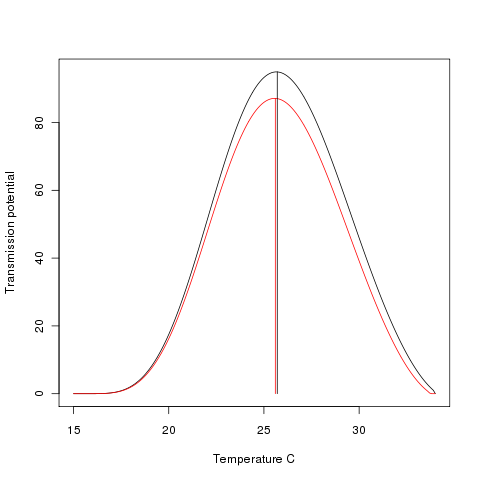A dynamic model of some malaria-transmitting anopheline mosquitoes of the Afrotropical region. II. Validation of species distribution and seasonal variations
Background
The first part of this study aimed to develop a model for Anopheles gambiae s.l. with separate parametrization schemes for Anopheles gambiae s.s. and Anopheles arabiensis. The characterizations were constructed based on literature from the past decades. This part of the study is focusing on the model’s ability to separate the mean state of the two species of the An. gambiae complex in Africa. The model is also evaluated with respect to capturing the temporal variability of An. arabiensis in Ethiopia. Before conclusions and guidance based on models can be made, models need to be validated.
Methods
The model used in this paper is described in part one (Malaria Journal 2013, 12:28). For the validation of the model, a data base of 5,935 points on the presence of An. gambiae s.s. and An. arabiensis was constructed. An additional 992 points were collected on the presence An. gambiae s.l.. These data were used to assess if the model could recreate the spatial distribution of the two species. The dataset is made available in the public domain. This is followed by a case study from Madagascar where the model’s ability to recreate the relative fraction of each species is investigated. In the last section the model’s ability to reproduce the temporal variability of An. arabiensis in Ethiopia is tested. The model was compared with data from four papers, and one field survey covering two years.
Results
Overall, the model has a realistic representation of seasonal and year to year variability in mosquito densities in Ethiopia. The model is also able to describe the distribution of An. gambiae s.s. and An. arabiensis in sub-Saharan Africa. This implies this model can be used for seasonal and long term predictions of changes in the burden of malaria. Before models can be used to improving human health, or guide which interventions are to be applied where, there is a need to understand the system of interest. Validation is an important part of this process. It is also found that one of the main mechanisms separating An. gambiae s.s. and An. arabiensis is the availability of hosts; humans and cattle. Climate play a secondary, but still important, role.
Malaria Journal 2013, 12:78
